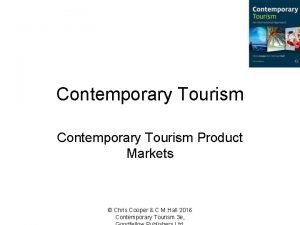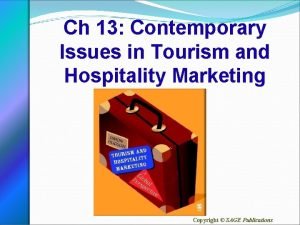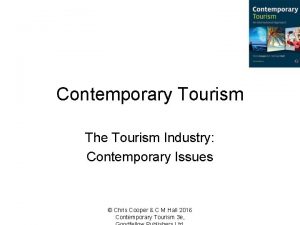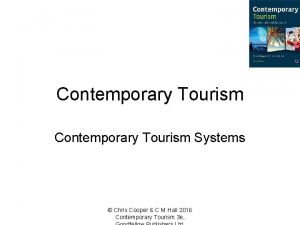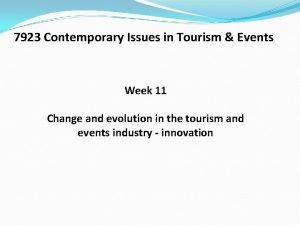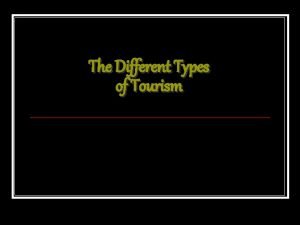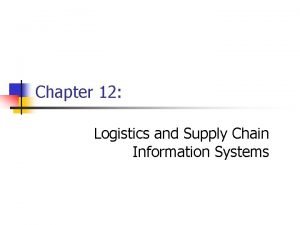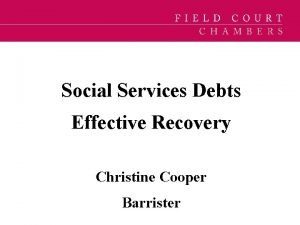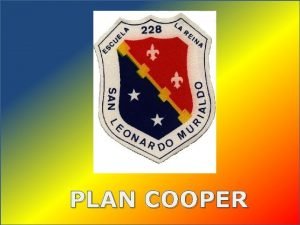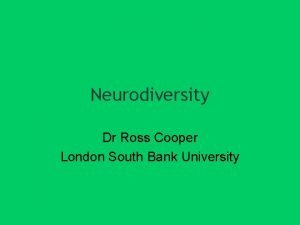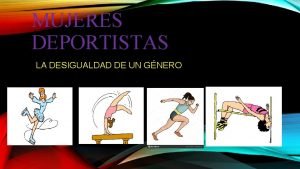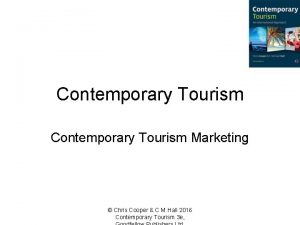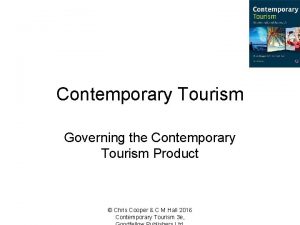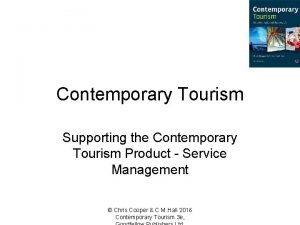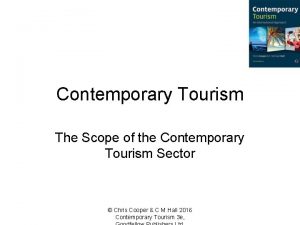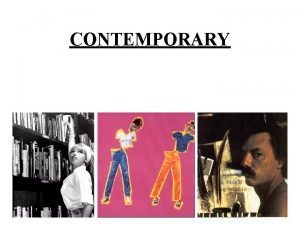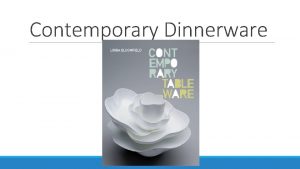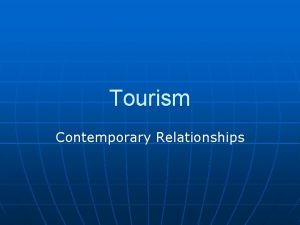Contemporary Tourism Systems Chris Cooper C M Hall















- Slides: 15

Contemporary Tourism Systems © Chris Cooper & C M Hall 2016 Contemporary Tourism 3 e,

Lecture Objectives • Understand the core elements in the service dimension of tourism. • Understand that the tourism experience does not exist independently of the interaction of tourism consumers and producers. • Recognise the different stages in the tourism system and their implication for the tourist experience. • Appreciate the importance of scale of analysis in studying tourism. • Identify some of the key constraints on tourism related travel. • Understand the characteristics that are used to define concepts of tourism, tourist and mobility. © Chris Cooper & C M Hall 2016 Contemporary Tourism 3 e,

Tourism • Misunderstood • Major Industry – although not a standard industrial classification • Key agent of economic, social and environmental change • Experiential industry • Service industry © Chris Cooper & C M Hall 2016 Contemporary Tourism 3 e,

The Service Dimension • Requires agreement and cooperation of customer • Outputs are not independent of the customer • Services are not totally intangible • Experience-based • The focus is the destination although the product has multiple layers © Chris Cooper & C M Hall 2016 Contemporary Tourism 3 e,

The Tourism System • Based on consumption and production of experiences • Impacts occur across the system • Each component has different production elements • Based on movement although changes are psychological as well as in space and time • Components: – – Generating region Transit route Destination region The environment© Chris Cooper & C M Hall 2016 Contemporary Tourism 3 e,

The Stages of Tourism Consumption • • • Decision to travel Travel to destination Activities at destination Travel from destination Recollection of the trip and destination upon return to permanent residence These all represent different psychological states for the tourist © Chris Cooper & C M Hall 2016 Contemporary Tourism 3 e,

Tourism Product(s) • Multi-layered and simultaneously consumed even if not fully realised by the tourist – Trip product – Destination product – Tourism business product – Service product – All can be combined © Chris Cooper & C M Hall 2016 Contemporary Tourism 3 e,

Who are Tourists? • ‘those consumers who are engaged in voluntary temporary mobility in relation to their home’ • Introduces the concept of mobility © Chris Cooper & C M Hall 2016 Contemporary Tourism 3 e,

Constraints on Mobility I • • Family Legislated holidays Work Location Gender Culture Religion © Chris Cooper & C M Hall 2016 Contemporary Tourism 3 e,

Constraints on Mobility II • • Income Time Institutions, e. g. regulations Politics Health Information Safety/security © Chris Cooper & C M Hall 2016 Contemporary Tourism 3 e,

Definitions of tourism • • Technical definitions require: Purpose of visit Time dimension Space dimension, i. e. crossing some border or distance threshold in some cases • Non-tourists, e. g. military service © Chris Cooper & C M Hall 2016 Contemporary Tourism 3 e,

Definitions • ‘the activities of a person traveling outside his or her usual environment for less than a specified period of time and whose main purpose of travel is other than exercise of an activity remunerated from the place visited’, where ‘usual environment’ (WTO 1991) © Chris Cooper & C M Hall 2016 Contemporary Tourism 3 e,

Definitions • An international tourist: • ‘a visitor who travels to a country other than that in which he/she has his/her usual residence for at least one night but not more than one year, and whose main purpose of visit is other than the exercise of an activity remunerated from within the country visited’ © Chris Cooper & C M Hall 2016 Contemporary Tourism 3 e,

Main approaches to Definitions • • Time Space Boundary crossing Purpose of traveling • The contemporary approach is to consider mobility © Chris Cooper & C M Hall 2016 Contemporary Tourism 3 e,

Recommended Websites • United Nations World Tourism Organization (UN body responsible for tourism): www. unwto. org/ • World Travel & Tourism Council (an international organization of travel industry executives promoting travel and tourism worldwide): www. wttc. org/ • Also find relevant national tourism organisations • The UN Statistical Division and the World Bank also provide online international tourism and other relevant statistics although these are not as up to date as UNWTO ©statistics Chris Cooper & C M Hall 2016 Contemporary Tourism 3 e,
 Chris cooper travel
Chris cooper travel Contemporary tourism
Contemporary tourism Contemporary issues in hospitality industry
Contemporary issues in hospitality industry Contemporary tourism meaning
Contemporary tourism meaning Contemporary tourism issues
Contemporary tourism issues Contemporary tourism definition
Contemporary tourism definition Contemporary issues in tourism
Contemporary issues in tourism Mass tourism vs alternative tourism
Mass tourism vs alternative tourism Contemporary issues in information systems
Contemporary issues in information systems Cynthia cooper accountant
Cynthia cooper accountant Christine cooper barrister
Christine cooper barrister Cooper v pate
Cooper v pate Operación deyse o cooper
Operación deyse o cooper Alan cooper persona
Alan cooper persona Dr ross cooper
Dr ross cooper Charlotte cooper frases
Charlotte cooper frases
